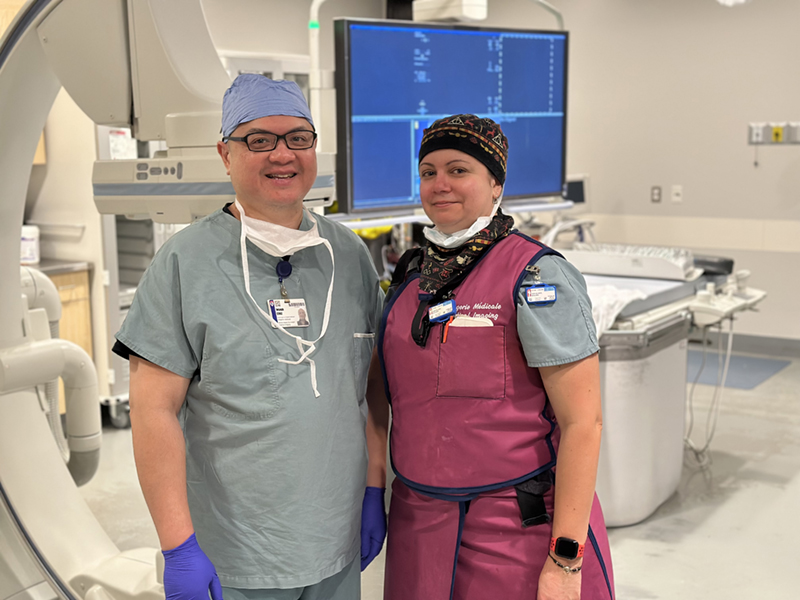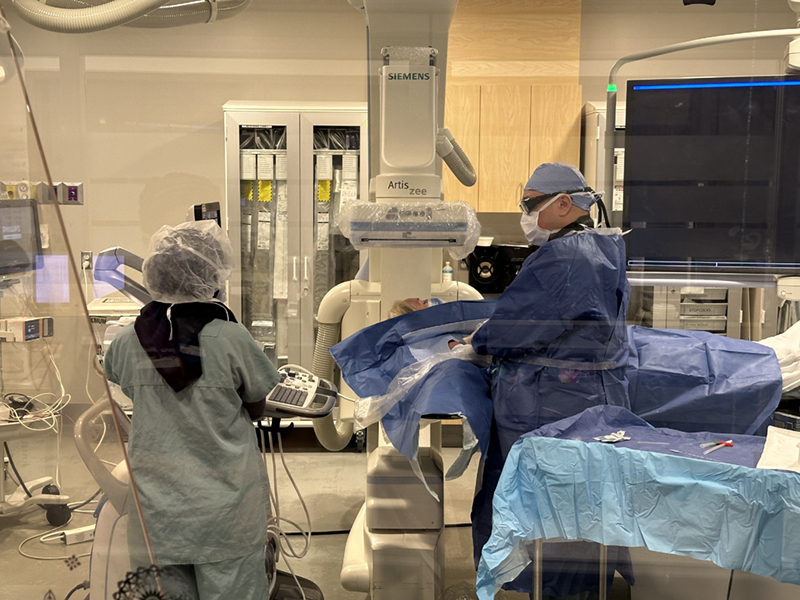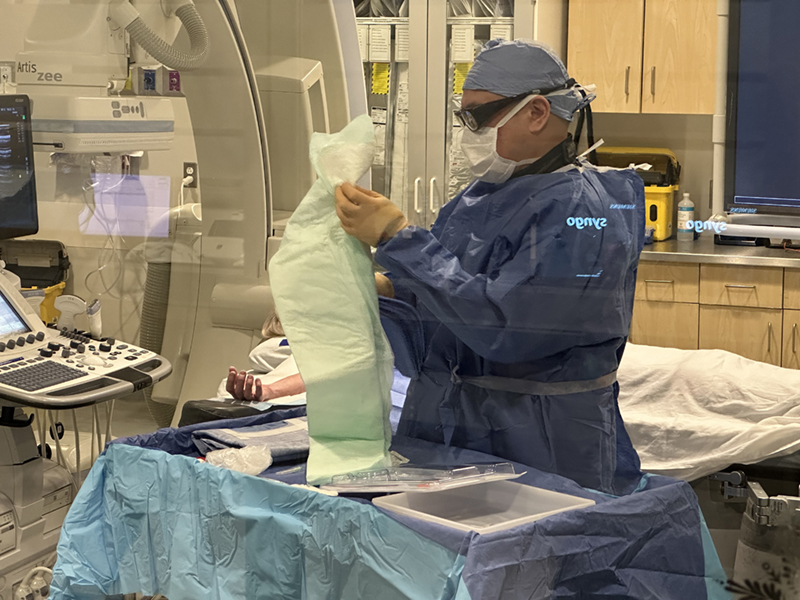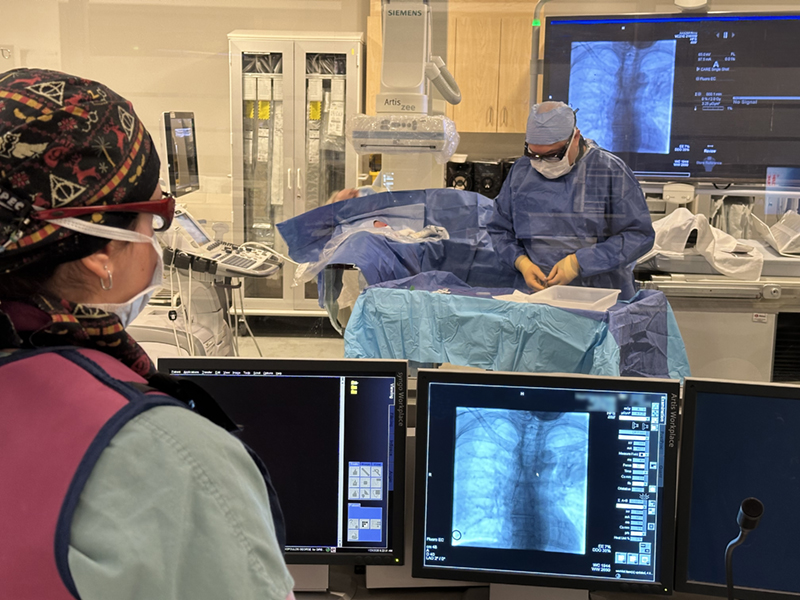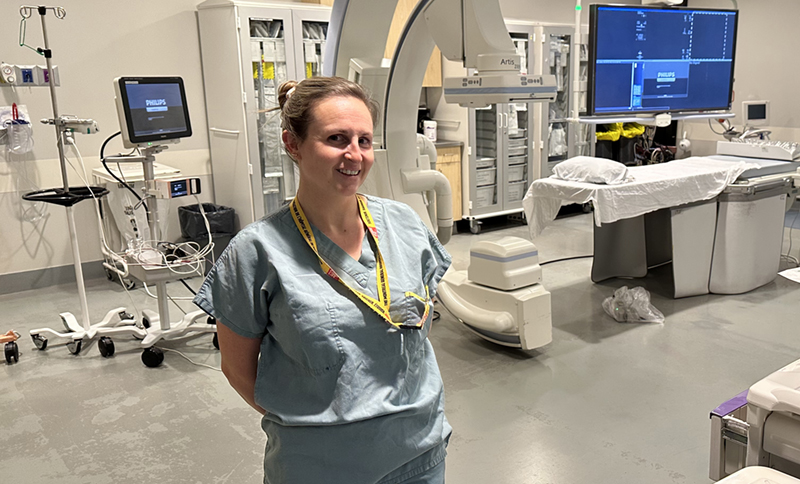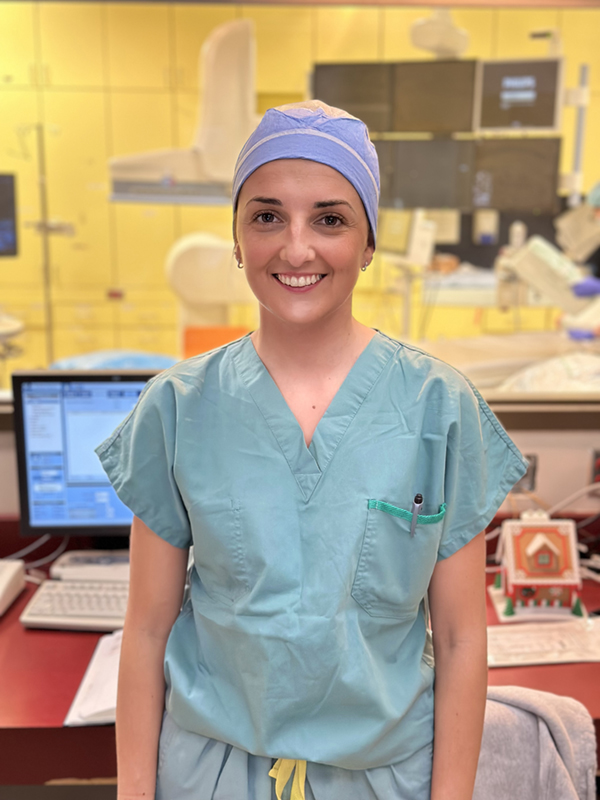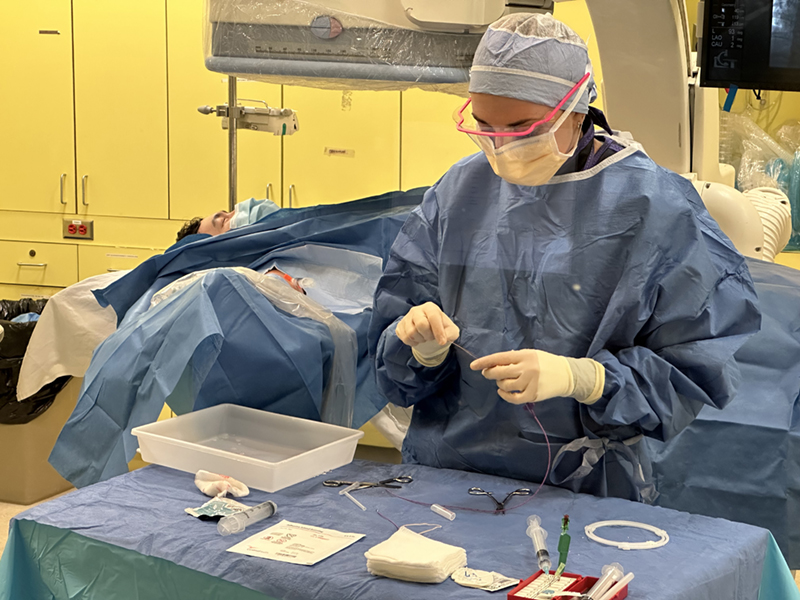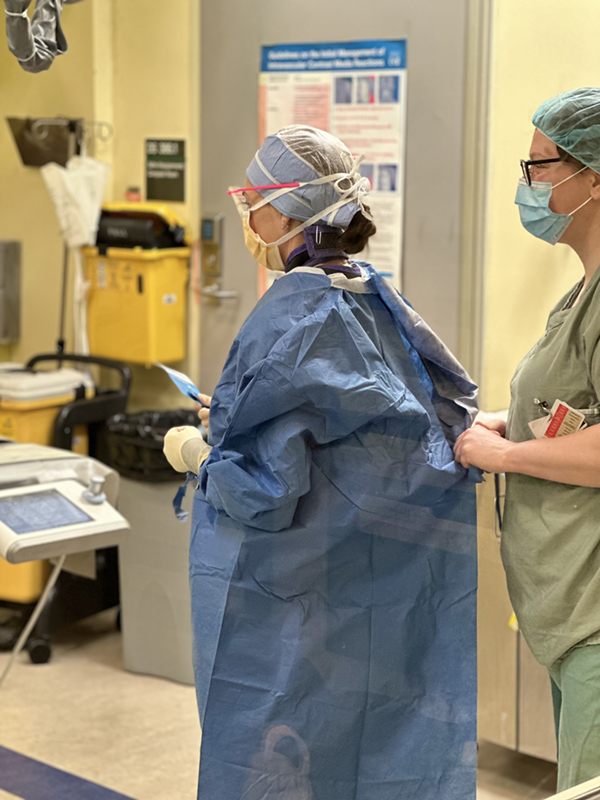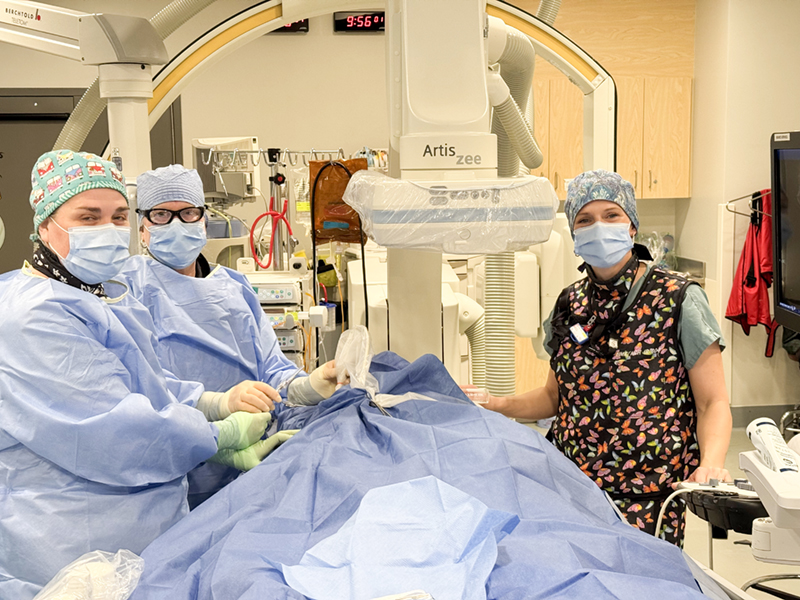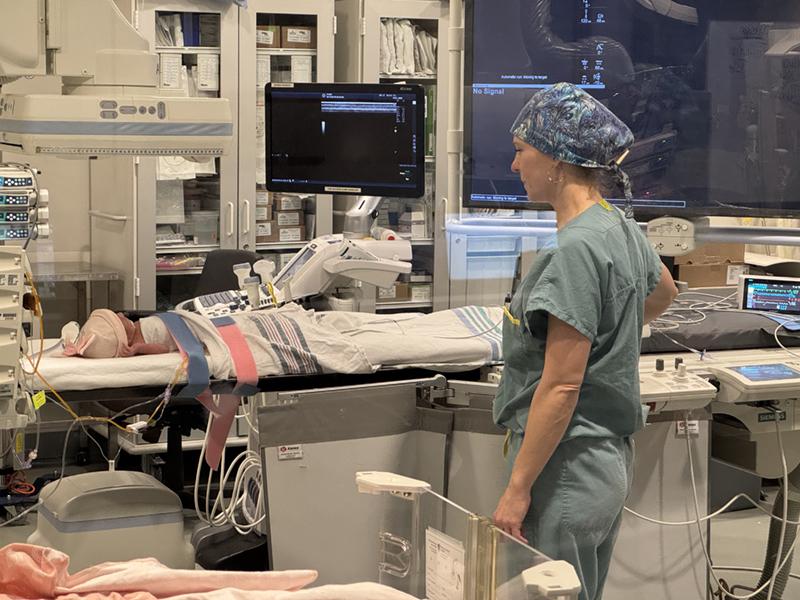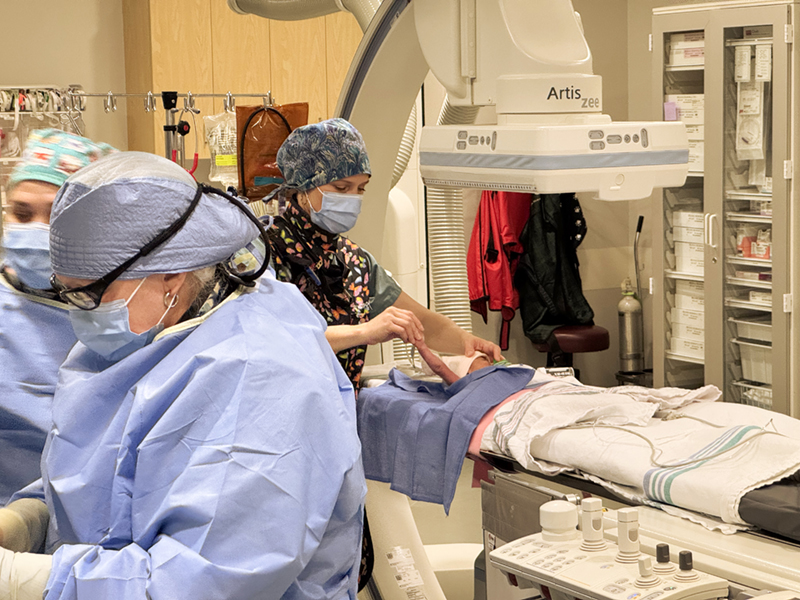The PICC line: The indispensable expertise of medical imaging technologists at the MUHC
At the MUHC, excellence is also driven by the expertise of medical imaging technologists like Joseph Cruz. Joseph has mastered the art of inserting PICC lines—a procedure that has been part of the recognized skills for these exceptional professionals since 2016.
The PICC line, an acronym for peripherally inserted central catheter, is a device that has become indispensable for many treatments. This long, thin, flexible tube, inserted into a vein in the arm (usually the right arm), extends to a large vein near the heart, enabling the safe and effective administration of medication, particularly complex treatments such as chemotherapy or antibiotics.
A highly specialized expertise
Joseph isn’t only certified as a medical imaging technologist. He has also undergone extensive theoretical and practical training to master every step of PICC line insertion. This expertise is essential to ensure that patients receive care under the best possible conditions.
When welcoming a patient who requires antibiotic treatment through a PICC line, Joseph works in perfect synergy with colleagues like Marjolaine Boilard and Tania Narbonne.
As he prepares for his next patient, Marjolaine takes the opportunity to walk us through the procedure in detail:

|
|
Once the catheter is in place, the patient is ready to receive their treatments with little or no discomfort. “With this device, patients avoid repeated injections and can sometimes administer their medications from home,” concludes Marjolaine.
At the Montreal General Hospital, Alessia Ponzo also performs PICC line insertions. On the day of our visit, with the help of Caroline Richard, she was inserting one for an Inuit patient who had been injured during a Beluga Whale hunt, and whose wound had become seriously infected. “The patient needs prolonged antibiotic treatment, which is administered through this method,” she told us.
At the Montreal Children's Hospital, four technologists perform PICC lines, Manon Laroche, Vicky Fortin, Tania Paoli and Kelly Doucette. Manon is one of the pioneers of this procedure. She started because medical residents were not accustomed to performing this procedure on children. “Children have very small veins,” Manon tells us. “The procedure is even more specialized in pediatric care. Technologists can perform PICC line insertions on babies weighing as little as 500 grams.”
A major step forward for the profession
Since PICC line insertion has become an authorized procedure for medical imaging technologists, their role in the healthcare system has continued to grow in importance. This highly technical procedure, once reserved for doctors, is clear evidence of the evolution of this profession.
This skill not only demonstrates their technical expertise and irreproachable professional judgement but also, it must be acknowledged, highlights their indispensable contribution to optimizing health services.
A commitment to the future
Thanks to passionate and qualified professionals like Joseph, Marjolaine, Tania N., Vicky, Manon, Kelly, Tania P., and Alessia, the MUHC is at the forefront of today’s healthcare. The PICC line is not just a simple medical device: it’s a symbol of innovation, patient comfort, and the commitment of technologists to provide exceptional care.

